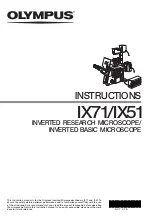
9
samples. Bring small samples home from your vacation. You will see
many small types of particles. Place a very thin layer of each sample on
a slide. Then add one drop of water and place a plastic slide cover over
the sample.
Dirt can have small pieces from rocks in it. It can also have lots of
organic material. This is made up of decomposed plant and animal
material. Dead leaves and grass get broken down and eaten up by
friendly bacteria and small animals like earthworms. Dirt that has lots of
organic material in it is called loam and it is very good for growing flowers
and vegetables in.
If the dirt in your garden does not have a lot of organic material in it you
can help it along by adding more dead plant material. A popular choice is
a plant called peat moss. This can be bought in big bags from any
garden center. This added plant material also acts like a sponge and
helps the dirt hold water to feed your plants.
Sand can be made up of small grains of different rock types that have
been broken down from bigger pieces. There can also be tiny fragments
of shells from long-gone sea creatures. In some places the beach sand
is black because the fine particles have been worn down from pieces of
coal!
Notes:
What do you see in your samples of dirt and sand? Be sure to wash your
hands when you are finished.
Material
Sample 1 Sample 2
Sample 3
Sample 4
Rock
Particles
Shell
Particles
Small
Pieces
from
Plants
Coal
Particles
Insect
Parts
Which samples would make good garden soil?
10
Project #5: Paper
You will need: Your microscope
two clean, blank slides
writing
paper
tissue
paper
newspaper
paper
towel
a
pen
a
little
water
Compare different paper types by placing small pieces between two
slides. Paper can be made from many things. Most paper is made from
trees. Sometimes the paper maker adds finely chopped up cotton rags.
Other types of paper are made from paper that has been used before.
Paper can be thick or thin. It can be smooth or rough. It can be very
strong or very weak.
Paper is used to write on, to make packages with, to clean up spills, to
blow your nose on (yuch!) and even to make clothes with.
Paper to write on is smooth, while paper tissues are soft. Paper towels
are thick, while newspaper paper (called
newsprint
) is thin.
Get different types of paper and compare them. Try to write on them.
Then try to clean up a few drops of spilled water with each type. Then
look at them through your microscope. If you look at small pieces from a
magazine or newspaper you will see that the pictures are printed with
tiny dots of colored ink.
Notes:
Writing
Paper
Newsprint
Paper
Towel
Face
Tissues
Can you write on
it with a pencil?
Can you write on
it with a pen?
How well does it
pick up spilled
water?
How strong is it?
How smooth is it?



















